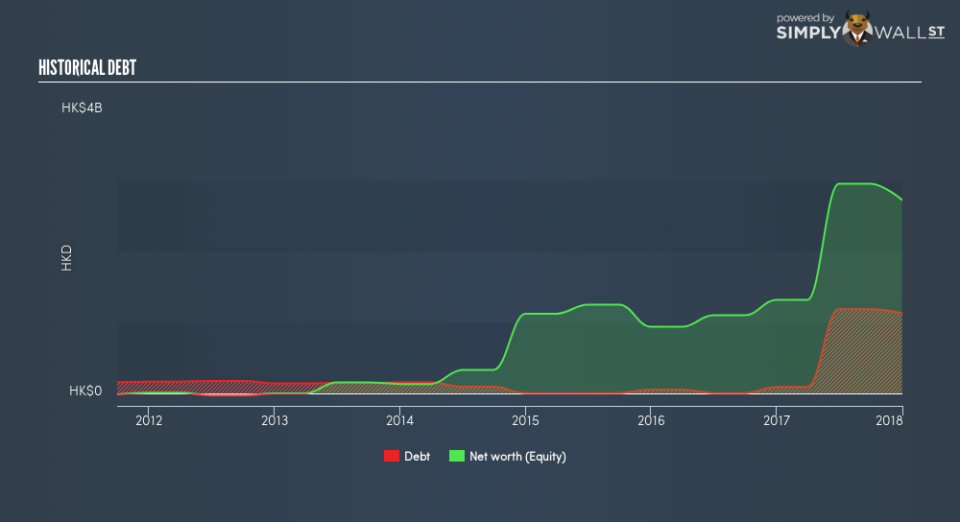Are China Soft Power Technology Holdings Limited’s (HKG:139) Interest Costs Too High?

While small-cap stocks, such as China Soft Power Technology Holdings Limited (HKG:139) with its market cap of HK$838.8m, are popular for their explosive growth, investors should also be aware of their balance sheet to judge whether the company can survive a downturn. Companies operating in the Electronic industry, even ones that are profitable, are inclined towards being higher risk. Evaluating financial health as part of your investment thesis is crucial. Here are few basic financial health checks you should consider before taking the plunge. However, this commentary is still very high-level, so I suggest you dig deeper yourself into 139 here.
Does 139 produce enough cash relative to debt?
Over the past year, 139 has ramped up its debt from HK$86.6m to HK$1.13b – this includes both the current and long-term debt. With this growth in debt, 139’s cash and short-term investments stands at HK$683.8m for investing into the business. Moving onto cash from operations, its small level of operating cash flow means calculating cash-to-debt wouldn’t be too useful, though these low levels of cash means that operational efficiency is worth a look. As the purpose of this article is a high-level overview, I won’t be looking at this today, but you can assess some of 139’s operating efficiency ratios such as ROA here.
Can 139 meet its short-term obligations with the cash in hand?
With current liabilities at HK$1.25b, it seems that the business has been able to meet these obligations given the level of current assets of HK$2.07b, with a current ratio of 1.65x. Usually, for Electronic companies, this is a suitable ratio as there’s enough of a cash buffer without holding too capital in low return investments.
Does 139 face the risk of succumbing to its debt-load?
139 is a relatively highly levered company with a debt-to-equity of 41.3%. This is not uncommon for a small-cap company given that debt tends to be lower-cost and at times, more accessible. We can check to see whether 139 is able to meet its debt obligations by looking at the net interest coverage ratio. A company generating earnings before interest and tax (EBIT) at least three times its net interest payments is considered financially sound. In 139’s, case, the ratio of 3.41x suggests that interest is appropriately covered, which means that lenders may be less hesitant to lend out more funding as 139’s high interest coverage is seen as responsible and safe practice.
Next Steps:
At its current level of cash flow coverage, 139 has room for improvement to better cushion for events which may require debt repayment. However, the company exhibits proper management of current assets and upcoming liabilities. This is only a rough assessment of financial health, and I’m sure 139 has company-specific issues impacting its capital structure decisions. I suggest you continue to research China Soft Power Technology Holdings to get a better picture of the stock by looking at:
Historical Performance: What has 139’s returns been like over the past? Go into more detail in the past track record analysis and take a look at the free visual representations of our analysis for more clarity.
Other High-Performing Stocks: Are there other stocks that provide better prospects with proven track records? Explore our free list of these great stocks here.
To help readers see past the short term volatility of the financial market, we aim to bring you a long-term focused research analysis purely driven by fundamental data. Note that our analysis does not factor in the latest price-sensitive company announcements.
The author is an independent contributor and at the time of publication had no position in the stocks mentioned. For errors that warrant correction please contact the editor at editorial-team@simplywallst.com.

 Yahoo Finance
Yahoo Finance 
